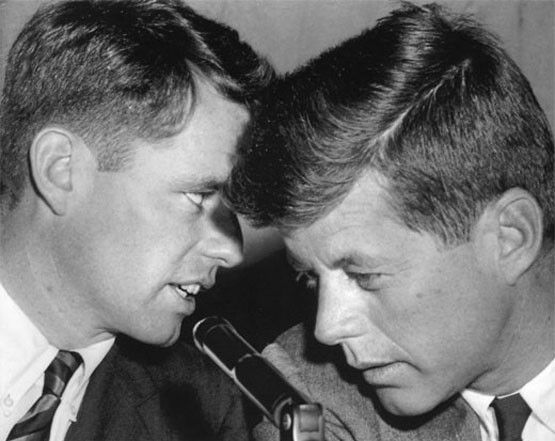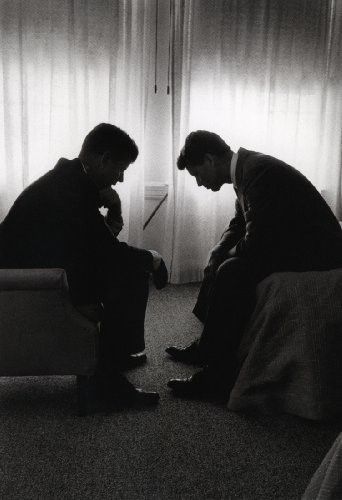What are the Executive Director’s Responsibilities?
I’ve been asked a lot lately what a chief executive officer or nonprofit executive director needs from his / her board chair. My response is pretty simple: someone who has the organization’s best interests at heart and is open to having frank – but supportive – dialog about the things that keep the CEO awake at night. In short – a trusted advisor. This dynamic is captured beautifully in this iconic photo of John and Bobby Kennedy.

Admittedly, the Kennedy brothers’ relationship was unique (and – yes – I realize that Bobby was the Attorney General, not President Kennedy’s board chair). All of which, skeptical CEOs might argue, only further proves just how rare it is to find these tendencies toward true partnership in a board chair.
But this also begs the correlate question: what does a board chair need from a CEO?
My view on this second question is consistent with the first: someone in whom the board chair has faith that the organization is in good hands, and who is open to constructive – and even occasionally critical – feedback that can elevate the organization’s performance. Speaking from experience, fulfilling these seemingly straightforward requirements can be surprisingly difficult for us CEOs. This may help explain many of the complexities that can make successful partnerships between executive directors and board chairs a rarity. With all of this in mind, and with this critical relationship at stake, this blog-post seeks to outline some of the challenges and responsibilities of the executive director / CEO as they relate to the board in general, and the board chair in particular.

Help the Chair Sit Solidly
No one tells first-time CEOs the cardinal rule of working with a board chair: help the board chair shine in his / her role! Nothing the CEO says in a board meeting should take the chair by surprise or in any way knock the chair off-balance. The board chair arguably has first dibs on important news, data, and reports. This gives the chair a fair opportunity to offer insight and value to the CEO. It also has the very real benefit of preparing the board chair for upcoming issues in a way that allows him / her to play to their strengths and avoid potentially awkward moments in front of the whole nonprofit board during meetings.
No Cats; Just Instruments:
It can be very difficult to get a board comprised of smart, strong, successful (read: quite unpredictable!) board members to all move in the same direction. This is particularly true given the part-time, often unpaid, and episodic nature of board members’ roles. Given this, executives sometimes see their job description as Chief Cat Herder to the board. But really, the role of CEO is more like an orchestra conductor – getting a group of highly talented individuals to play the same song, while at the same time allowing each one an opportunity to shine at a different moment. This is clearly easier said than done. But one important step toward avoiding becoming Chief Cat Herder is to stop treating the board like cats (e.g. feeding them (bits of information), letting them in and out (of the information loop), and sporadically showing them affection (through meals, thank you notes, and branded gifts)). Instead, we need to make them part of the orchestra, with a clear job to do and clear expectations for how they contribute to the whole. Which brings us to…

Q&A (with emphasis on Q):
A common mistake that we CEOs make is thinking that we need to have all the answers. We can’t and don’t; and there is no shame in that. Nor is there any real reason for us to spend massive amounts of time trying to bring all of the right answers to board meetings. Rather, executive directors can galvanize the board to thoughtful action not by broadcasting answers, but rather by posing the right questions. Our job is to get the board members to work a problem, to provide them with structure and data when and where helpful, but mostly to get the really smart people on the board engaged in problem-solving the nonprofit organizations’ most impactful issues.
Reflect not Deflect
Another challenge for CEOs is how to respond to criticism from the board. I’ve certainly put a lot of energy into arming myself to refute or discredit the inevitable – and wholly appropriate – constructive critiques of the board. It’s also common to see ourselves as needing to protect the staff by deflecting or otherwise shielding them against critical feedback from the board. Rather than focusing on deflection, I now think about it more in terms of reflection. First, frank assessments from the board and board chair warrants serious consideration and introspection. Second, even the harshest criticism can be valuable to the CEO and team, as long as the CEO it is transmitted through a prism to reshape that criticism into information that is insightful and actionable. Reflection versus deflection.
In turn, writing this post caused me to reflect on the CEO-board chair relationship of which I am a direct participant. In full disclosure, I feel quite fortunate to work with an exemplary board chair, which makes much of the above natural and easy. Understanding that this is not always the happy circumstance, I offer these tips to help others navigate the complex and important relationship between executive director and board chair in any environment.
Todd Gibby is the Chief Executive Officer of BoardEffect, with a primary focus on supporting client organizations in achieving their governance goals. Todd joined BoardEffect in early 2014, after having previously served as the president of Hobsons’ higher education division. Todd became part of Hobsons in 2011 through the acquisition of Intelliworks, where he was CEO. Earlier, Todd held numerous executive leadership positions at Blackboard, playing an instrumental role in the company’s trajectory from a start-up software company to the global leader in digital education.
Todd sits on the board of directors for Compass of Greater Philadelphia and the Rassias Center at Dartmouth College. He also serves as the Network Officer for the Washington DC Chapter of Young Presidents Organization and advises several early-stage companies. He is a frequent public speaker, social media writer, and a contributor to Wharton Entrepreneurship blog.
PREVIOUS POST :
The Ideal Exit of the Nonprofit Executive